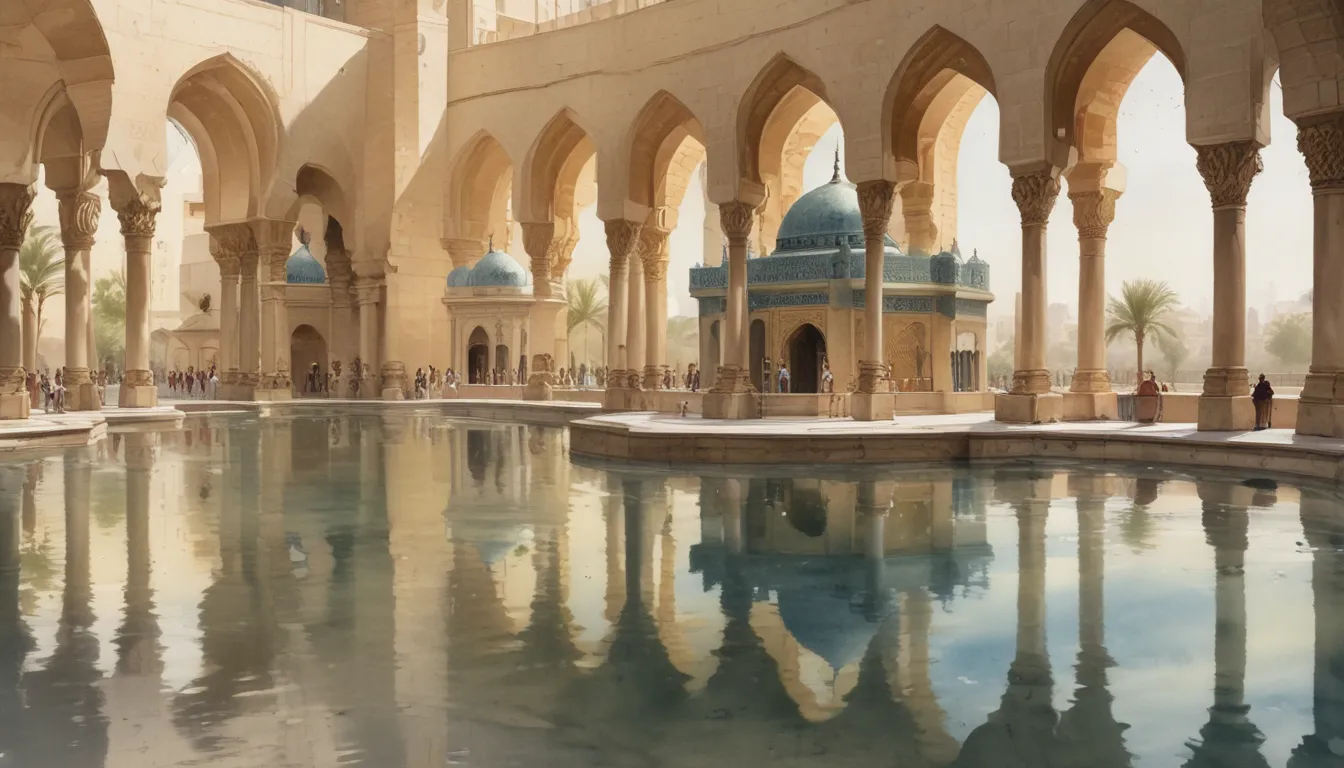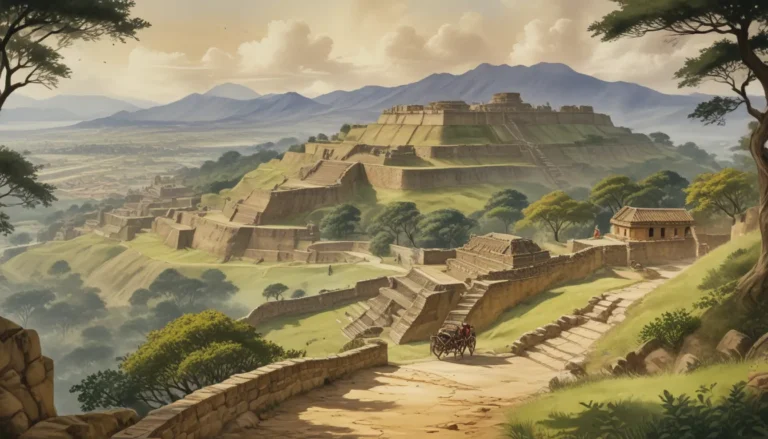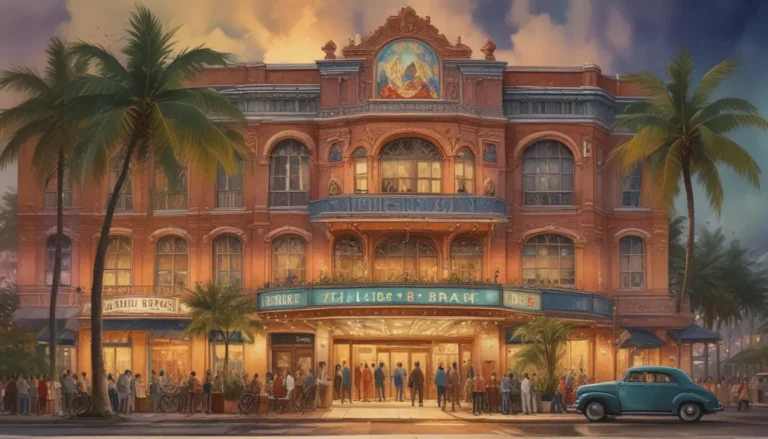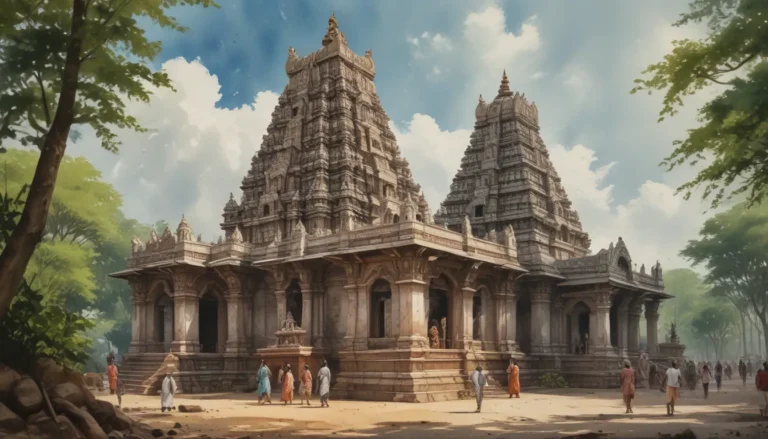The images in our articles are for illustrative purposes only and may not exactly match the content. They are intended to capture your interest and complement the text, not to replace it.
Welcome to the captivating world of the Museum of Islamic Art, an exceptional cultural institution nestled in the heart of Doha, Qatar. This museum is a treasure trove of Islamic art and heritage, where visitors can immerse themselves in the beauty, grandeur, and spiritual significance of Islamic culture. Join us on a journey through time as we uncover 20 enigmatic facts about this extraordinary museum that will ignite your curiosity and deepen your appreciation for the ingenuity and artistic prowess of Islamic art.
Unveiling the Beauty of the Museum of Islamic Art
Situated majestically on the Corniche waterfront in Doha, Qatar, the Museum of Islamic Art stands as a beacon of cultural heritage and artistic splendor. Designed by the renowned architect I. M. Pei, this architectural masterpiece showcases artworks spanning 1,400 years of Islamic art history. With over 14,000 artifacts, including ceramics, textiles, jewelry, and manuscripts, the museum offers a comprehensive timeline of Islamic artistic traditions from various regions of the Islamic world.
A Glimpse into the Architectural Marvel
The museum’s exterior is a symphony of geometric design and symmetry inspired by Islamic geometric patterns. Set against the backdrop of Doha’s modern skyline and the sparkling waters of the Arabian Gulf, the museum’s location on an artificial island adds to its architectural grandeur. Step inside, and you’ll be greeted by a breathtaking interior featuring grand halls, intricate details, and a sense of serenity that transports visitors to a world of enchantment.
Exploring the Treasures Within
From stunning calligraphy and intricate ceramics to awe-inspiring textiles and ancient manuscripts, the Museum of Islamic Art offers a diverse and rich collection that represents the interconnectedness of different artistic disciplines and regions within the Islamic world. The museum’s library, with over 47,000 books and resources, is a valuable repository for researchers and scholars interested in delving deeper into Islamic art and culture.
Embracing Education and Cultural Enrichment
The museum is not only a repository of artistic treasures but also a hub of educational programs, workshops, and guided tours designed for visitors of all ages. Whether you’re a history enthusiast, an art lover, or simply curious about the Islamic world, the museum offers a unique opportunity to learn, explore, and appreciate the beauty and significance of Islamic art and history.
Preserving and Promoting Islamic Heritage
The Museum of Islamic Art stands as a symbol of Qatar’s unwavering commitment to preserving and promoting Islamic culture and heritage. Through its dedication to showcasing the beauty and grandeur of Islamic art, the museum has garnered international acclaim for its architectural brilliance, cultural significance, and expansive collection.
Embark on a Journey Through Time
As you explore the Museum of Islamic Art, you’ll be transported through centuries of artistic mastery and cultural richness that captivate and inspire. Whether you’re admiring rare Qur’ans, relaxing in the museum’s tranquil courtyard, or browsing through the gift shop for unique souvenirs, every moment spent in this remarkable institution will leave you in awe and appreciation of the beauty and diversity of Islamic art.
FAQs:
Q: What is the history of the Museum of Islamic Art?
A: The Museum of Islamic Art in Doha, Qatar, was established to preserve and showcase Islamic art and culture. Designed by architect I. M. Pei, it has become an iconic landmark in the city.
Q: What can I expect to see at the Museum of Islamic Art?
A: Visitors can explore a vast collection of Islamic art, including stunning calligraphy, intricate ceramics, magnificent textiles, and ancient manuscripts that showcase the beauty and diversity of Islamic artistic traditions.
Q: Are guided tours available at the Museum of Islamic Art?
A: Yes, the museum offers guided tours led by experts who provide valuable insights into the exhibits and the history of Islamic art, enhancing the visitor experience and deepening understanding of the artworks.
Q: Is photography allowed inside the museum?
A: Photography is generally not permitted inside the museum, but there may be specific areas where photography is allowed. Visitors are advised to check with museum staff or refer to signage within the museum.
Q: Is there an admission fee for the Museum of Islamic Art?
A: The museum offers free admission to its permanent collection, with charges for special exhibitions or events. Visitors are encouraged to check the museum’s website for the latest information on admission fees.
Conclusion: Immerse Yourself in the Beauty of Islamic Art
Embark on a journey through time and immerse yourself in the beauty and richness of Islamic art at the Museum of Islamic Art in Doha, Qatar. From its architectural marvels to its diverse collection of artistic treasures, this museum offers a captivating glimpse into the vibrant tapestry of Islamic culture and heritage. Whether you’re a history buff, an art enthusiast, or simply curious about the Islamic world, a visit to this remarkable institution will inspire, educate, and leave you in awe of the enduring legacy of Islamic art.
The Museum of Islamic Art is a true cultural gem that beckons visitors to explore, discover, and appreciate the enigmatic wonders of Islamic art. So, come and experience the magic of this extraordinary museum that celebrates the beauty, grandeur, and diversity of Islamic culture like never before.






